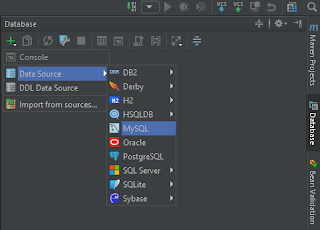It offers quite a few ways of formatting the output and you can even make your own formatting style.
Below class does not override the toString method, but with ToStringBuilder it's possible to nicely print the values.
package com.blogspot.jpdevelopment.example.tostring;
public class ToString {
private final String attributeOne;
private final String attributeAnother;
public ToString(String attributeOne, String attributeAnother) {
this.attributeOne = attributeOne;
this.attributeAnother = attributeAnother;
}
}
Using ToStringBuilder, output will be like in the comments above each System.out line.
ToString toString = new ToString("attributeOne", "attributeAnother");
// com.blogspot.jpdevelopment.example.tostring.ToString@31befd9f[attributeOne=attributeOne,attributeAnother=attributeAnother]
System.out.println("Default toString: " + ToStringBuilder.reflectionToString(toString));
// attributeOne,attributeAnother
System.out.println("Simple toString: " + ToStringBuilder.reflectionToString(toString, ToStringStyle.SIMPLE_STYLE));
// com.blogspot.jpdevelopment.example.tostring.ToString@31befd9f[
// attributeOne=attributeOne
// attributeAnother=attributeAnother
// ]
System.out.println("Multi line toString: " + ToStringBuilder.reflectionToString(toString, ToStringStyle.MULTI_LINE_STYLE));
// ToString[attributeOne=attributeOne,attributeAnother=attributeAnother]
System.out.println("Short prefix toString: " + ToStringBuilder.reflectionToString(toString, ToStringStyle.SHORT_PREFIX_STYLE));
// com.blogspot.jpdevelopment.example.tostring.ToString@31befd9f[attributeOne,attributeAnother]
System.out.println("No field names toString: " + ToStringBuilder.reflectionToString(toString, ToStringStyle.NO_FIELD_NAMES_STYLE));
To make you own style, simple make a class that extends ToStringStyle.
public class MyToStringStyle extends ToStringStyle {
public MyToStringStyle() {
this.setUseClassName(true);
this.setUseIdentityHashCode(false);
this.setUseFieldNames(true);
this.setContentStart("[start]");
this.setFieldSeparator(",");
this.setFieldSeparatorAtStart(false);
this.setContentEnd("[end]");
}
}
The output now looks like this.
// Custom toString: com.blogspot.jpdevelopment.example.tostring.ToString[start]attributeOne=attributeOne,attributeAnother=attributeAnother[end]
System.out.println("Custom toString: " + ToStringBuilder.reflectionToString(toString, new MyToStringStyle()));







